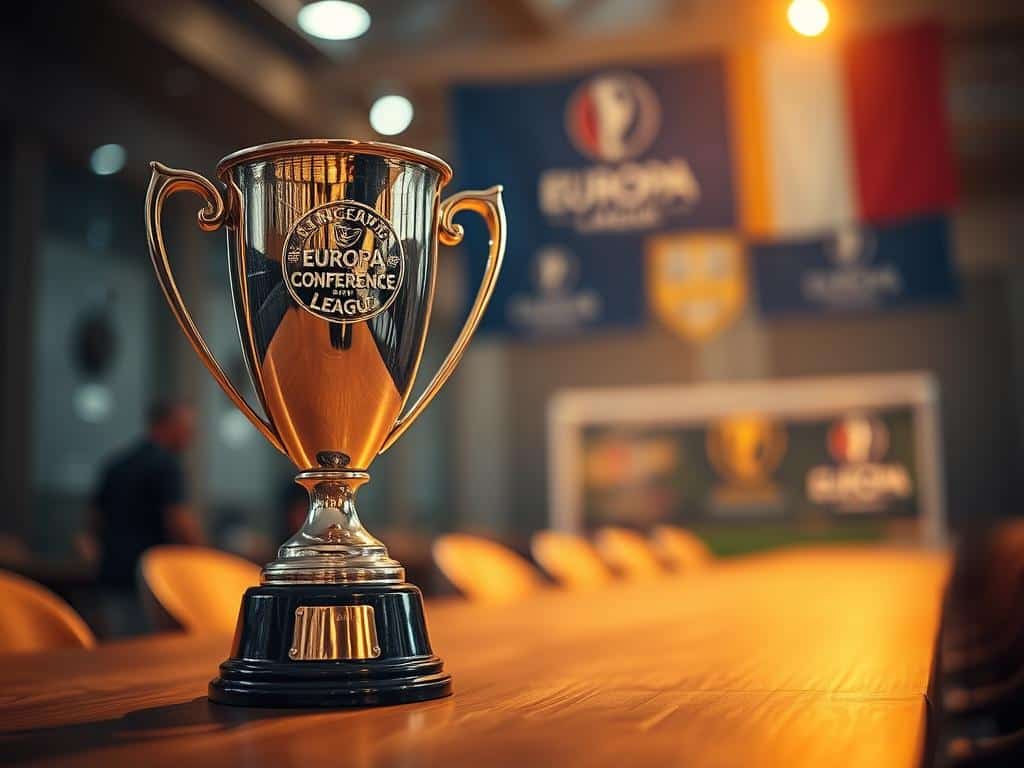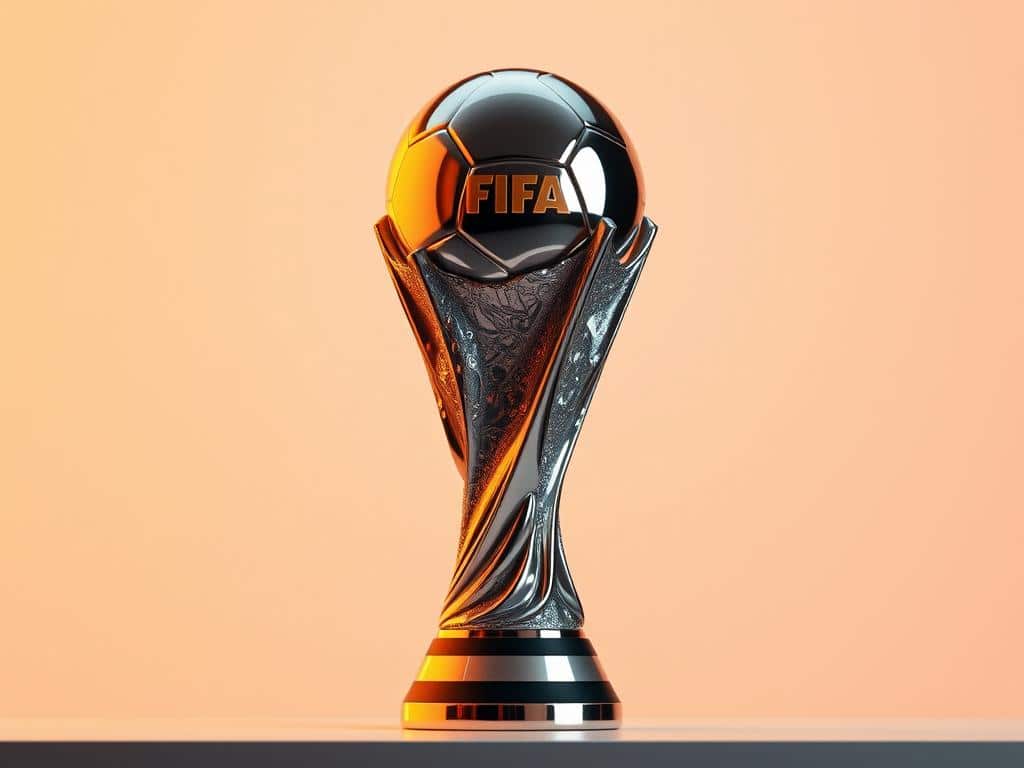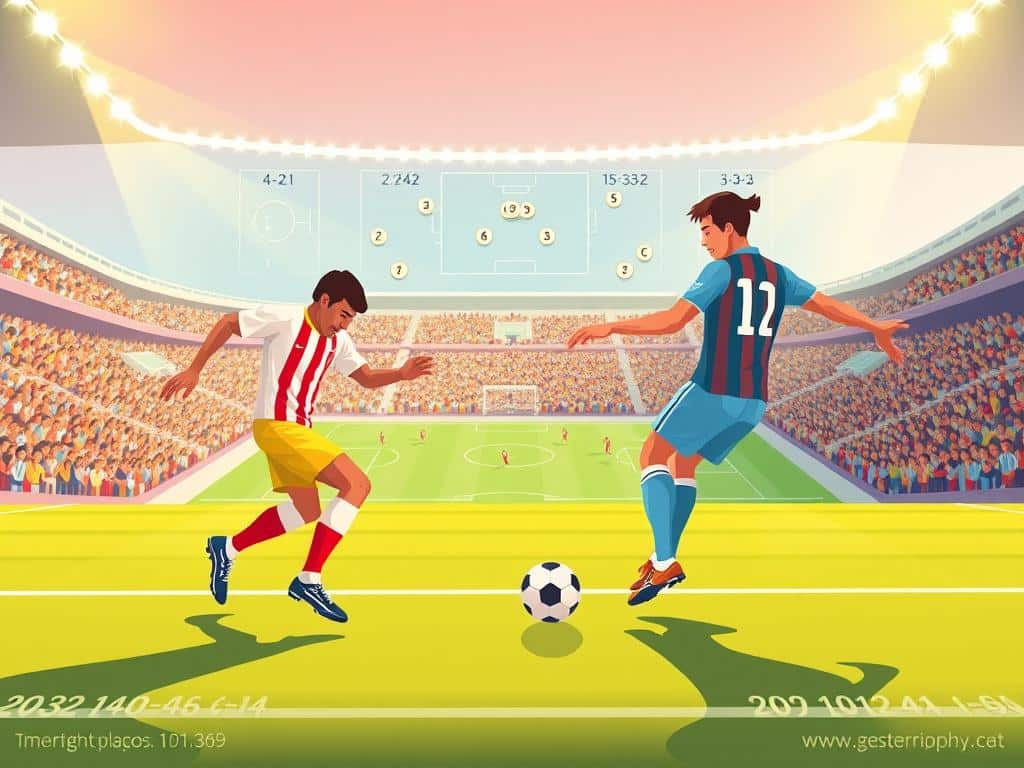Ever wondered where rising soccer teams get their shot at European glory? The UEFA Conference League is the answer. As UEFA’s third-tier tournament, it gives smaller clubs a chance to shine on the big stage.
Launched in 2021 and rebranded in 2024, this competition bridges the gap between elite and emerging soccer nations. With 36 teams in the league phase, it’s a proving ground for talent outside top leagues.
Why does it matter? It offers qualification pathways different from the Champions League and rewards underdogs. Current champions Olympiacos made history as the first Greek club to lift a major European trophy.
Ready to explore how this tournament reshapes soccer’s landscape? Let’s kick off!
What Is the UEFA Europa Conference League?
What if smaller teams had their own path to European soccer success? The UEFA Europa Conference League makes that possible. Launched in 2021, it’s UEFA’s third-tier tournament, giving clubs from emerging nations a shot at glory.
A New Tier in European Football
Think of it as a bridge between local leagues and elite competitions. Unlike the Champions League, which features top clubs like Real Madrid, the Conference League focuses on teams from lower-ranked associations. No automatic group-stage entries here—every team earns its spot.
Clubs like AZ Alkmaar benefit greatly. They’ve played three seasons, gaining consistent European exposure. The format also differs—games are on Thursdays, avoiding clashes with higher-tier matches.
How It Differs from Champions League and Europa League
The Europa League sits above the Conference League, but both share a trickle-down system. Teams that fail in UEFA Europa qualifiers drop into this tournament. Winners advance to the Europa League, unless they qualify for the Champions League.
West Ham United’s 2023 victory shows its impact. Lifting the trophy boosted their European profile dramatically. For smaller clubs, it’s a game-changer—offering experience, revenue, and a chance to shine.
The History and Evolution of the Conference League
From humble beginnings to global recognition, the Conference League has a story worth telling. Born from UEFA’s 2015 plans to expand opportunities, it kicked off in 2021 with a mission: let smaller clubs shine. The first qualifying round saw Malta’s Mosta FC make history—Evo Chris scored the tournament’s debut goal.

Inception and Rebranding
Originally named the UEFA Europa Conference League, the competition dropped “Europa” in 2024 to stand alone. This rebrand mirrored its growing prestige. Format changes also aligned with the Champions League, introducing a unified league group stage.
Notable Past Winners and Memorable Moments
Roma’s 1-0 win over Feyenoord in 2022 marked the inaugural final. José Mourinho’s team etched their names as pioneers. Fast-forward to 2024: Olympiacos became the first Greek club to claim the trophy, defeating Fiorentina.
Record-breakers stole headlines too. Ayoub El Kaabi netted 11 goals in 9 games for Olympiacos. Chelsea’s 8-0 thrashing of FC Noah set the biggest margin. Even Harry Kane left his mark—a hat-trick for Spurs in 2021.
West Ham United’s 2023 victory proved the tournament’s value. For fans, these moments aren’t just stats—they’re proof that underdogs can triumph.
Understanding the Conference League Format
Want to know how the Conference League format gives underdogs a fighting chance? Unlike traditional tournaments, it blends a league phase with knockout drama. Let’s decode how teams like Aston Villa thrived in 2024.
League Phase vs. Knockout Rounds
The league phase replaced groups in 2024. Now, 36 teams battle in one table. Top 8 advance straight to the Round of 16. Teams ranked 9th–24th face play-offs for remaining spots.
Why does this matter? Smaller clubs get more games to prove themselves. Celtic’s clash with Fenerbahçe in 2024 showed how every match counts.
Match Scheduling and Key Dates
Games kick off on Thursdays across three time slots. This avoids clashes with the UEFA Europa League but keeps fans glued to screens.
- July: Qualifying rounds begin.
- May 28, 2025: Final in Athens.
Compared to the Champions League, the path is shorter but just as thrilling. Fewer matches mean every goal carries extra weight.
How Teams Qualify for the Europa Conference League
What’s the secret behind teams like Chelsea or Bodø/Glimt making it to the big stage? The Conference League offers multiple pathways, blending domestic success with European ambition. Whether you’re a Premier League giant or a Faroe Islands underdog, there’s a route for you.
Pathways for Top Leagues vs. Smaller Associations
Top leagues like England’s Premier League send their cup winners or 5th-place finishers. Chelsea’s 2024 entry came via the EFL Cup—a lifeline for mid-table teams. Meanwhile, Norway’s Bodø/Glimt qualified through league position, proving consistency matters.
Smaller nations have simpler rules. Liechtenstein’s Vaduz (2022–23) entered as their only cup winners. The qualifying rounds start with 58 teams, from Romania’s CFR Cluj to the Faroe Islands’ KÍ Klaksvík. Coefficient rankings decide how many slots each country gets.
The Role of Europa League Dropouts
Think of it like a backdoor pass to European soccer. Champions League and Europa League failures can drop into the Conference League. Ajax’s 2024 exit from the Europa League qualifiers landed them here, adding firepower to the tournament.
- Domestic success: Cup wins or high league finishes.
- European fallbacks: Teams like Tottenham (2021–22) set the precedent.
- Surprise entries: KÍ Klaksvík’s fairytale run from tiny leagues.
Every team’s journey is unique. From Vaduz’s cup magic to Aston Villa’s Premier League grind, the Conference League rewards all paths to glory.
The Europa Conference League Significance in European Football
The Conference League reshapes european football by turning underdogs into headline-makers. Olympiacos’ 2024 triumph as the first Greek champions proved smaller clubs can dominate. With 34 nations represented last season, it’s a global stage for local heroes.
Opportunities for Smaller Clubs and Nations
Serbia’s Čukarički stunned fans in 2023, reaching the group stage. Ferencváros’ 2023 run lifted Hungary’s UEFA coefficient, unlocking more slots for future teams. For Norway’s Molde, prize money meant better training facilities.
AZ Alkmaar’s youth stars, like Myron van Brederode, used the tournament as a launchpad. MLS fans take note—this is where raw talent shines before moving to bigger leagues.
Impact on Domestic Leagues and Player Development
Israel’s Maccabi clubs boosted their nation’s profile through consistent performances. Albania’s 2022 final host city saw tourism spike, proving soccer drives local economies.
Watch Olympiacos’ Hwang In-beom—his 2024 heroics put him on elite radars. The Conference League isn’t just games; it’s a talent factory rewriting soccer’s future.
Prize Money and Financial Rewards
Money talks in soccer, and the Conference League is no exception. For smaller clubs, the prize money isn’t just a bonus—it’s a lifeline. Let’s break down how earnings shape teams’ futures.

Breaking Down the Earnings for Clubs
Every team in the league phase banks €3.17M just for showing up. Win a match? That’s €400K extra. Even a draw nets €133K. For Icelandic clubs like Breiðablik, a €150K first-round exit fee funds youth academies.
Champions take home €7M total—enough to buy a top MLS Designated Player’s contract. Gent’s 2023 semifinal run financed their new training facility. Hidden bonuses sweeten the deal, like €260K for domestic titleholders.
Comparing Payouts to Other UEFA Competitions
The UEFA Europa League dwarfs these numbers. Fiorentina earned €20M as 2024 runners-up. Champions League payouts? Even higher. But for underdogs, the Conference League offers something priceless: a foothold in Europe.
Chelsea’s 2024 entry wasn’t just about glory—it meant €5M+ in guaranteed revenue. As payouts grow, this tournament could rival the UEFA Europa League’s financial clout. For now, it’s the perfect stage where passion meets profit.
The Future of the Europa Conference League
Could the Conference League become Europe’s next big soccer stage? With plans to expand to 40+ teams, it’s poised for explosive growth. Broadcasters like Paramount+ are betting big, securing rights through 2027.
North American fans might see MLS academies leverage this platform soon. Rumors swirl about Mexican teams joining, adding a transatlantic twist. The 2026 final bids—Prague or Helsinki—hint at UEFA’s global ambitions.
Format tweaks could include weekend matches, boosting viewership. Will it surpass the UEFA Europa League? Not yet. But for rising stars and underdog nations, the future looks dazzling.







